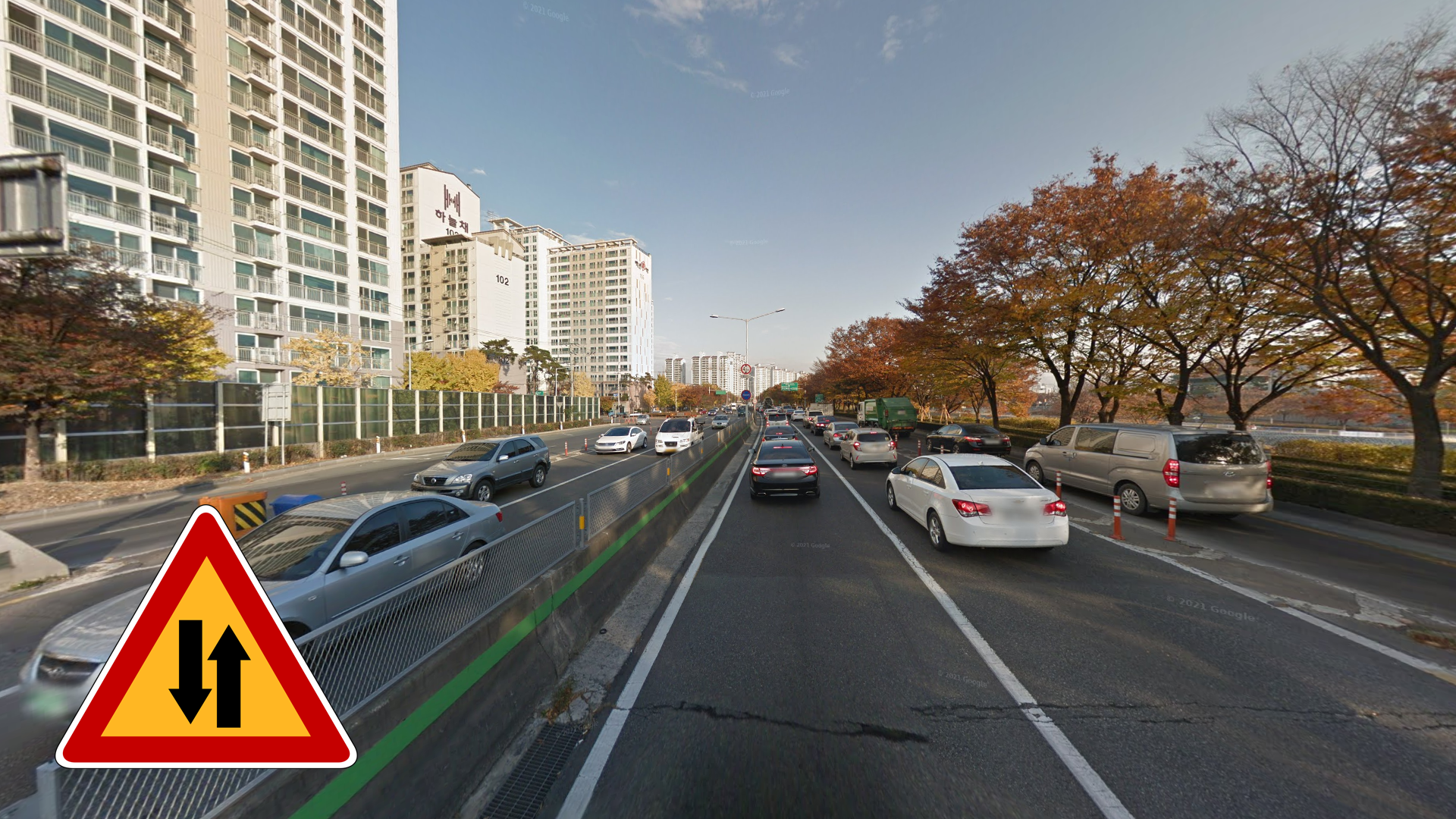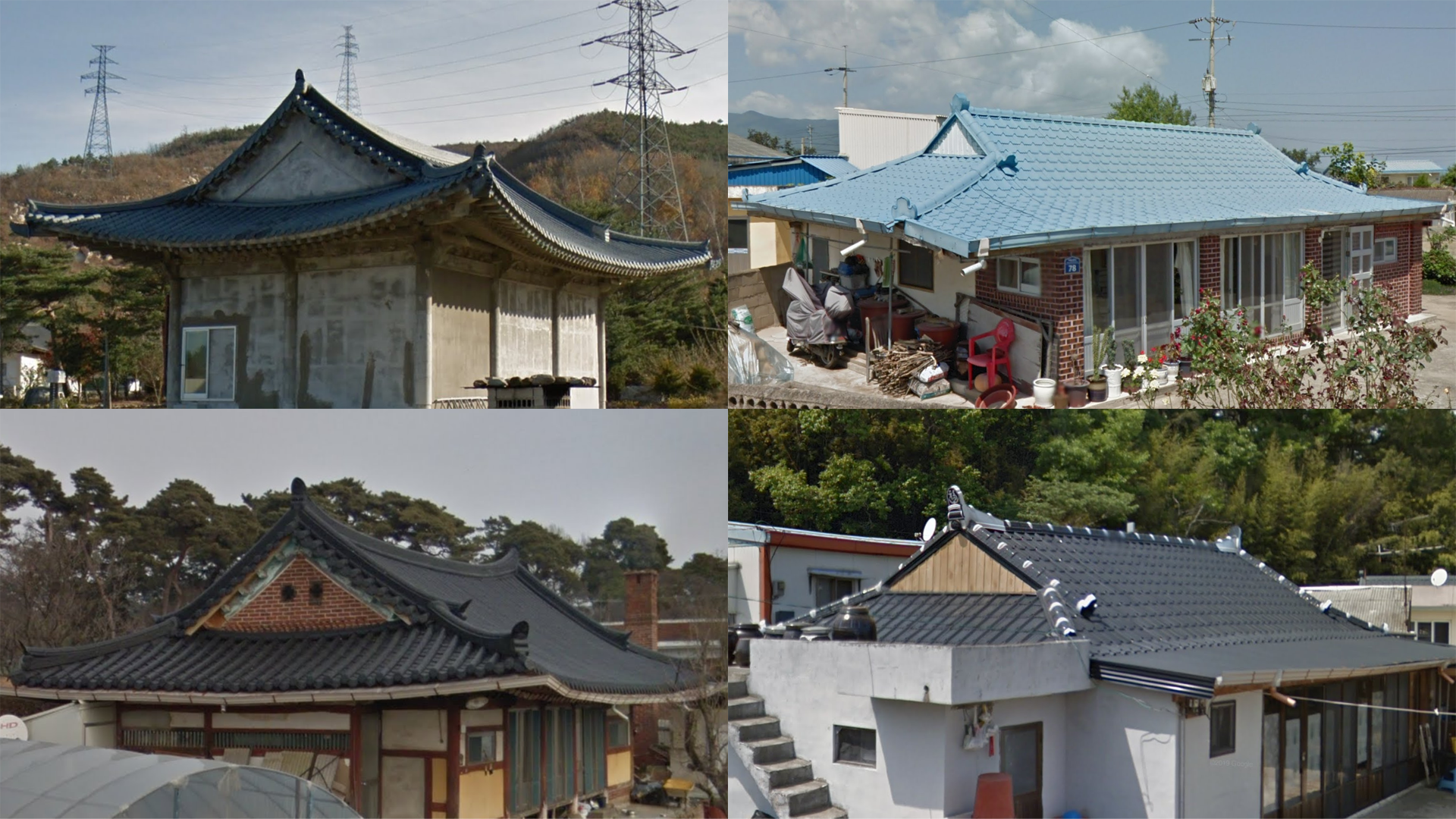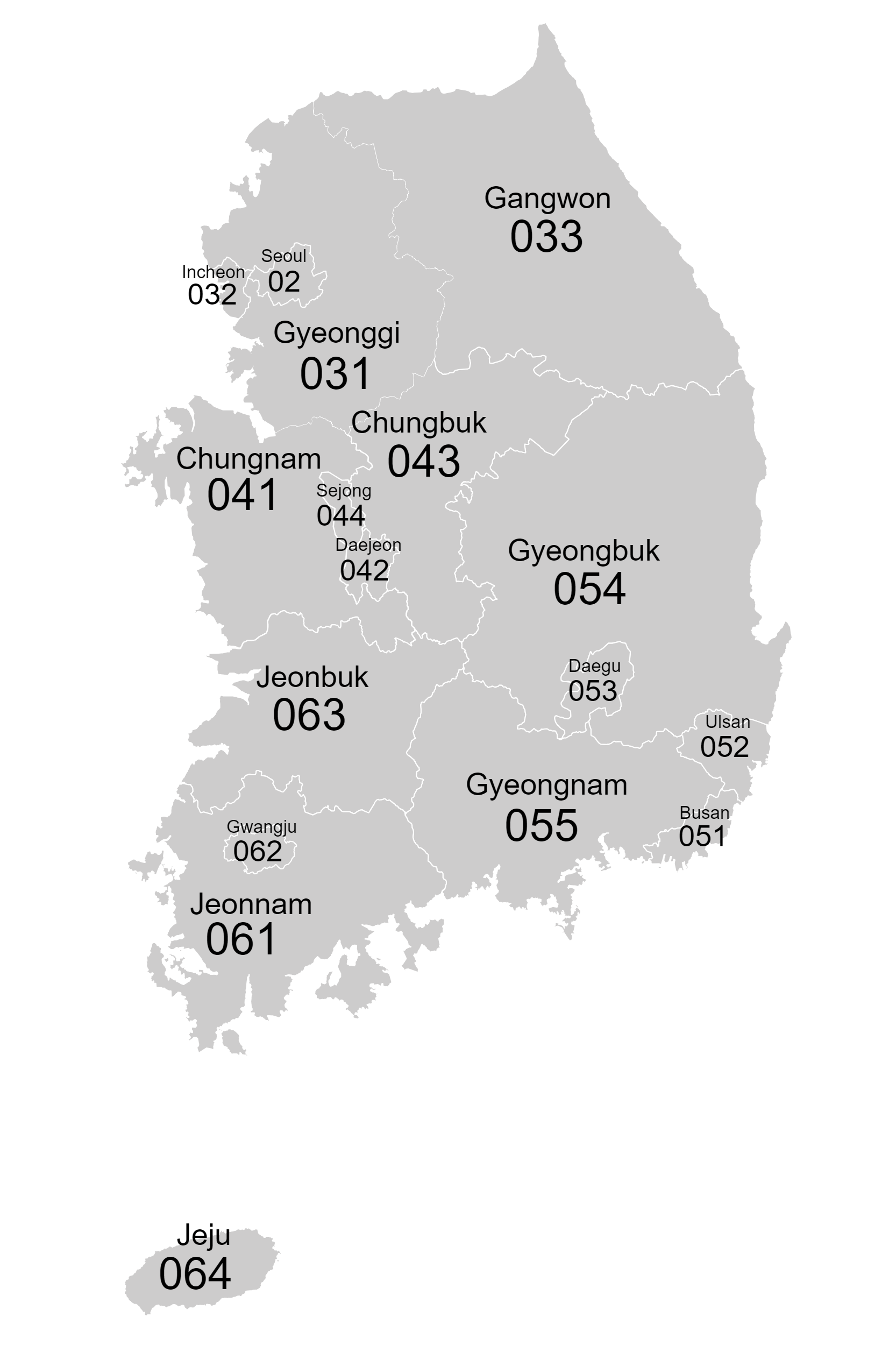
South Korea
The Korean writing system (Hangul) is very unique and recognizable. One of its standout features is the presence of circles in many of its letters. This sets it apart from most other East Asian writing systems.
Utility poles almost always have these pole markings near the bottom, consisting of black and yellow diagonal stripes.
These markings look similar to the ones found in Taiwan. There are however two main differences:
In South Korea, the stripes do not reach all the way to the bottom, whereas in Taiwan they do.
In South Korea, the stripes are more yellow. In Taiwan, they have more of an orange tint.
Korean buildings have very distinctive house numbers. They are blue and usually are shaped quite literally like a house. The full address of the building is written on them, in both Hangul and Latin script.
Some places have unique house numbers, which you can use to region-guess. More information about this can be found in the spotlight section.




























